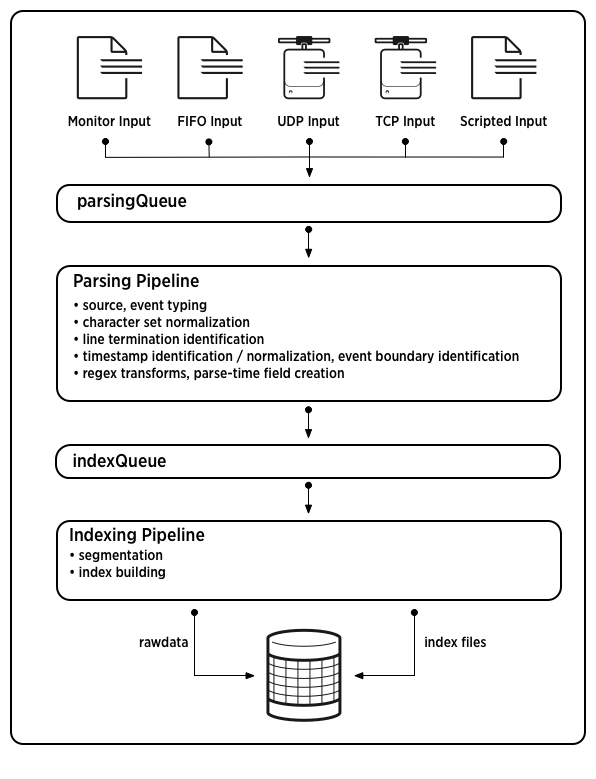Splunk - ilya-khadykin/notes-outdated GitHub Wiki

How to install
Splunk offers a free version with almost all capabilities of Enterprise version which can be used as a learning tool
Installation instructions can be found in official documentation - http://docs.splunk.com/Documentation/Splunk/6.4.0/Installation/Chooseyourplatform
On Linux
- Download splunk_package_name.tgz
- Extract it to
/optwithtar xvzf splunk_package_name.tgz -C /opt
Starting up Splunk
-
splunkdis a daemon and C or C++ server that can process and index data even if it is streaming, or even if it is quickly moving data. It can also process and index static data files. Splunkd is responsible for searching and indexing, which it does through the Splunk API; -
Splunkwebprovides web interface to Splunk API, it's written on Python
The functions of Splunk
-
Data Collection Splunk can collect data from different sources, it can handle even streaming data
-
Data Indexing Before data can be searched, it needs to be indexed. To create an index actually requires two steps: parsing and indexing. Parsing, which is basically separating the data into events, involves several steps. More details - http://docs.splunk.com/Documentation/Splunk/latest/Indexer/Howindexingworks

In short, in addition to breaking up chunks of data, it adds metadata (or data about data), such as host (what device did the data come from), source (where did the event originate from), and sourcetype (the format of the data), as well as timestamps and other necessary information. The next step, indexing, breaks the events into segments that can subsequently be searched. It creates a data structure for the index and then writes the raw data and index files to disk. With this index structure, searches in Splunk can be quickly done on massive data sets.
-
Data Searching
-
Data Analysis